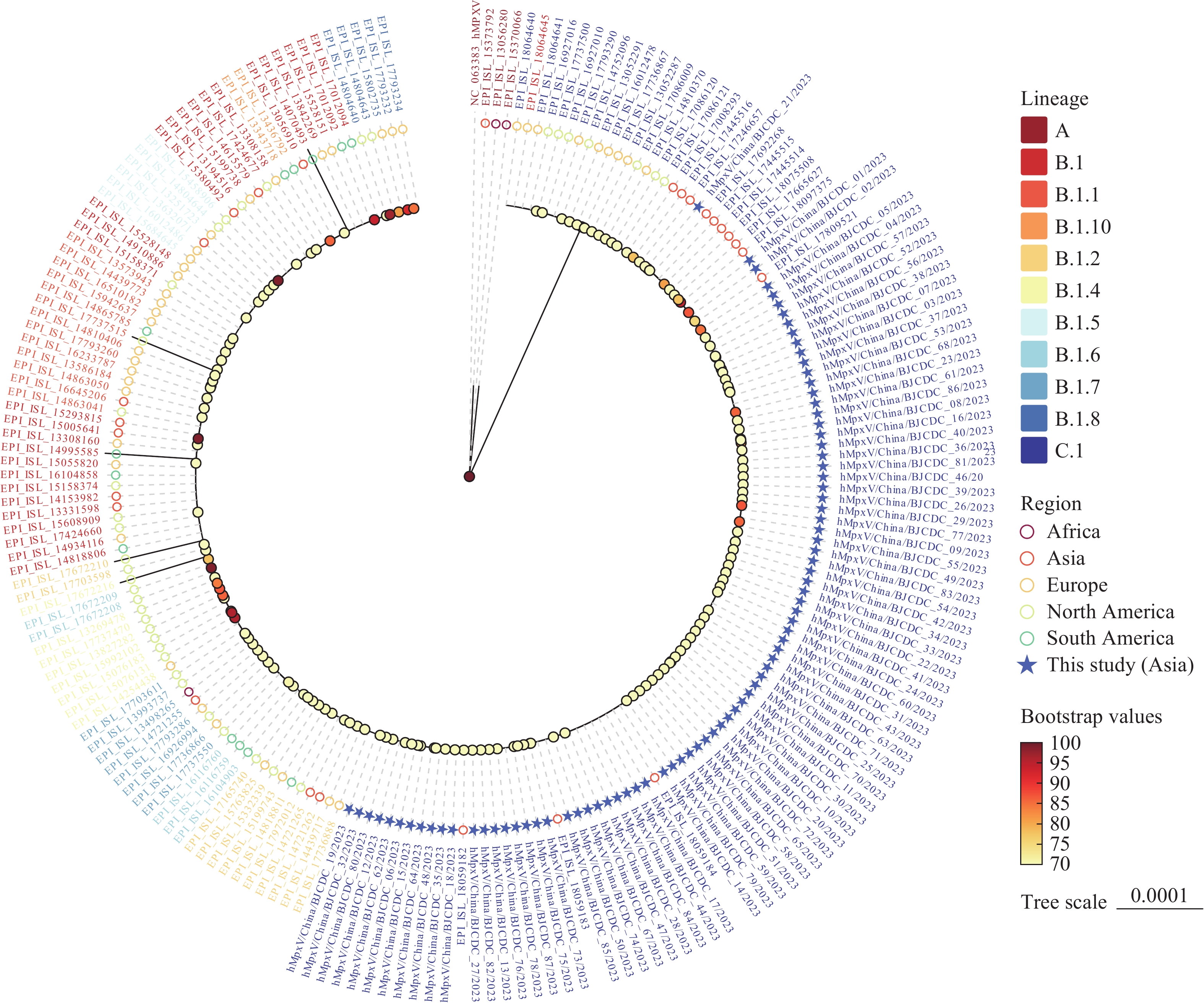2023 Vol. 5, No. 41
Consuming refined grains, specifically white rice, elevates the risk of developing type 2 diabetes (T2D). Conversely, incorporating whole grains into the diet is linked to a reduced risk.
This study employed a novel multi-trajectory modeling technique to account for the intercorrelations among various cereal consumption patterns. Four distinct multi-trajectory groups of cereal intake, identified from 1997 to 2018 within the Chinese population, were associated with varying levels of T2D risk.
This research investigates the implications of evolving cereal consumption patterns on T2D in nondiabetic adults. This study delineates unique trajectories linked with cereal intake patterns, thereby providing a robust foundation for policymakers to craft initiatives to prevent T2D among adults in China.
The first indigenous incidence of Mpox (previously known as monkeypox) within Chinese mainland was documented in May 2023, with subsequent local and imported cases identified. A comprehensive understanding of the Mpox virus’s (MPXV) characteristics within Beijing remains incomplete. In this study, 84 MPXV genomes from 82 local incidents and two imported instances, detected between May and July 2023, were analyzed. All MPXV strains fell within lineage C.1 of the West African clade, displaying limited genetic heterogeneity, encompassing 76–87 nucleotide substitutions and holding nucleotide identities between 99.996% and 100%. Phylogenetic exploration indicated that all genomes exhibited high homology to those presently prevalent in neighboring East Asian and Southeast Asian regions. Forty-six distinct haplotypes were identified among the strains, with 36.90% of genomes corresponding to four common haplotypes, suggesting repeated cross-regional introductions and restrained distribution via recurrent local transmission. These findings elucidate the genetic diversity and phylogenesis of MPXVs during their nascent transmission within Beijing and provide vital information to enhance future Mpox containment strategies.
The swift advancement of biotechnology has presented both opportunities and challenges to our society, thrusting biosafety to the forefront of concern. Consequently, the evaluation of rescue capabilities in the event of a bioterrorism incident becomes of paramount importance. Currently, there is a notable absence of specific measurement criteria and a comprehensive evaluation system. This paper aims to establish a systematic approach towards assessing emergency response capabilities in the context of bioterrorism incidents.
We employed an enhanced Delphi methodology to establish an index evaluation framework. Subsequently, the weight of the judgment matrix was ascertained via the application of the fuzzy comprehensive evaluation approach. This led to the creation of a fuzzy comprehensive evaluation model for bioterrorism rescue capability.
A modified Delphi study was conducted involving 11 experts across two rounds, achieving a response rate of 100%. The Kendall coordination coefficients recorded in the first and second rounds were 0.303 and 0.632, respectively (P<0.05). Upon comprehensive analysis involving score, coefficient of variation, and full score ratio, we distinguished five primary indicators and 25 secondary indicators. Subsequently, an evaluation model was developed based on the Analytic Hierarchy Process (AHP) tailored to assess the response to a rescue from bioterrorism.
The expert panel confirmed consensus on all aspects of the model, validating its comprehensive content. The succeeding course of action involves converting the assessment model to a measurable scale, affirming its functionality, and implementing it in practical evaluation tasks to further enhance the capabilities of the biological incident rescue team.



 Subscribe for E-mail Alerts
Subscribe for E-mail Alerts CCDC Weekly RSS Feed
CCDC Weekly RSS Feed
